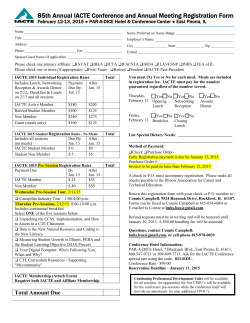
Full Sense Device
Full Sense Device • Randal S Baker MD FACS • Grand Rapids, Michigan USA IFSO Disclosure • Randal S Baker MD FACS • Consulting/Speaking: – Ethicon – Baxter • Commercial Interests – BFKW LLC - Partner Eureka Moment Position of Esophageal Stent Location of Strictures Concept Finalist Selected to provide pressure and optimize the function of the gastro esophageal junction Pressure Related Satiety Scale • Vomiting • Nausea • Stuffed • Fullness • No Hunger • Hunger GE Junction Preservation Full SenseTM Device - Evolution CE-Mark Prototype Device Randomized Study Device Initial Trial Device Second Generation Device without Barbs First Generation Device with Barbs Confidential 8 Laparoscopic view of cardiac disk Animal Weight Loss Data Human Trial I Data Mean BMI = 44 0% EXCESS BODY WEIGHT LOSS 0 13 18 35 46 68 -5% -10% -15% -20% -25% Device Removed -30% EBWL = 28.5% 78 84 119 Days Satiety Results Completely Full 10 9 P<.0001 Satiety 8 7 6.3 P<.0001 6 5 7.5 4.3 4 3 2.1 2 Most Hungry 1 Before Meals Device Before Removed BeforeMeals MealsDevice No Device After Meals Device After Device Removed AfterMeals Meals No Device With the device in place, patients reported that they were only slightly hungry prior to meals and were “pleasantly satisfied” after eating. Hunger went away after eating just small amounts of food. Randomized Study Results Cross Over Mean BMI = 37 Consistent Weight Loss And Metabolic Improvement • All patients continue to lose weight until device is removed. Higher pressure = steeper weight loss. • 14 studies confirm same pattern of weight loss. • Metabolic Considerations: – Significant metabolic improvements similar to RYGB and Sleeve. * – Hypothesis: Device pressure in stomach causes decreased bowel transit time and increased incretin response. *IFSO 2013 Presentation Anti-Migration Tethers Antimigration Strategy • Temporary: Endoscopic suture or clip. • Long Term: Mucosal Capture and Tissue in growth. – “Locked in” by 2-3 weeks. Deployment Device Deployment Over Scope Clinical Considerations • More direct and continuous than food based scenario. • Significant satiety at baseline and fullness with eating and drinking. • No non-responders in any study. • Patients continue to lose weight until device is removed (88% mean EBWL at 8.4 months). • Long Term Implant requires adjustability. • Metabolic improvements. Benefits • • • • • • No incisions. Potential outpatient sedation only. Service overweight and obese population. Children and adolescents. More cost effective. Offer second chance to post bariatric patients who have regained weight. • Safer and less invasive thus more readily adopted by population. • Service patients with metabolic disease but not obesity. Bariatric Surgery Only Impacting less than 1% Of Eligible Patients Full Sense Status • Design Freeze for device – August 2014. • CE Mark in progress. – ISO Quality Achieved. • Centers in Europe and Canada Identified. – Begin training this fall. – Those centers will be training centers. • Expected CE Mark in 2015 Before and After
© Copyright 2025





















